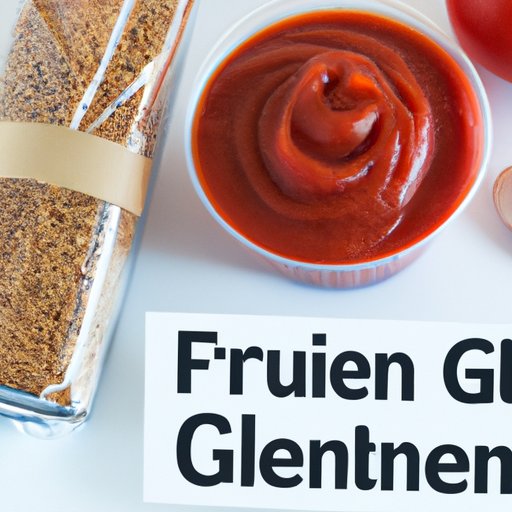
Introduction
For those with gluten sensitivities, the process of maintaining a gluten-free diet can be challenging and overwhelming. Many food products contain gluten, which can cause unpleasant side effects for those with sensitivities to the protein. Tomato paste is a staple ingredient in many kitchens, but is it gluten-free? This article will explore the ins and outs of tomato paste and gluten, providing helpful information for those living a gluten-free lifestyle.
The Gluten-Free Guide to Tomato Paste: What You Need to Know
Gluten is a protein found in wheat, barley, and rye. It can cause inflammation in the small intestine for those with celiac disease or gluten sensitivities. Tomato paste is a concentrated form of tomatoes that is commonly used as a base for sauces, soups, and stews. It is also used as a pizza topping and in many other dishes. For those with gluten sensitivities, it’s important to be aware of any gluten-containing ingredients in tomato paste and to understand the labeling regulations around gluten-free products.
Making Sense of Tomato Paste: Is It Really Gluten-Free?
According to the United States Food and Drug Administration (FDA), a food product can only be labeled as “gluten-free” if it contains less than 20 parts per million (ppm) of gluten. This means that a gluten-free product may still contain trace amounts of gluten. In the case of tomato paste, it is considered inherently gluten-free because it is made from tomatoes, which do not contain gluten. However, it’s important to note that some brands of tomato paste may have been processed in facilities that also process wheat, barley, or rye products, increasing the risk of cross-contamination.
Gluten-Free Cooking 101: Understanding Tomato Paste Ingredients
Tomato paste is made from tomatoes that have been cooked down and strained to remove the excess water. It may also contain added ingredients, such as salt and spices, to enhance the flavor. When choosing tomato paste, it’s important to read the label carefully and look for any gluten-containing ingredients. Some tomato paste products may include additives like wheat flour or maltodextrin, which can contain gluten. It’s also important to look for any statements about the product being processed in a facility that also processes wheat or other gluten-containing ingredients.
Navigating the Gluten-Free Lifestyle: Safe and Unsafe Tomato Paste Products
There are many brands of tomato paste on the market, and it can be challenging to determine which ones are safe for those with gluten sensitivities. Some brands of tomato paste that are confirmed to be gluten-free include Muir Glen, San Marzano, and Cento. However, many common brands of tomato paste, such as Hunt’s and Contadina, do not make a gluten-free claim on their packaging. It’s important to check the label and look for any gluten-containing ingredients or statements about the product being processed in a facility that also processes wheat or other gluten-containing ingredients. If a brand or product is uncertain, it’s best to contact the manufacturer directly to confirm its gluten-free status.
Tomato Paste and Gluten: Demystifying the Connection for the Gluten-Free Community
In conclusion, tomato paste is generally considered to be gluten-free because it is made from tomatoes, which do not contain gluten. However, it’s important to carefully check the label and look for any gluten-containing ingredients or statements about the product being processed in a gluten-contaminated facility. Advocating for one’s own health and safety in the kitchen is essential for those living a gluten-free lifestyle, and with the right information and resources, it can be a manageable and enjoyable experience.
Conclusion
For those with gluten sensitivities, maintaining a gluten-free diet can be challenging and stressful. Tomato paste is a common ingredient in many dishes, but it’s important to be aware of any gluten-containing ingredients and to understand the labeling regulations around gluten-free products. By carefully checking labels and researching products, individuals can make informed choices and stay safe and healthy while enjoying the foods they love.





